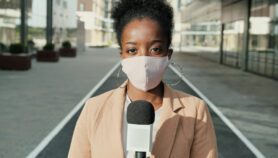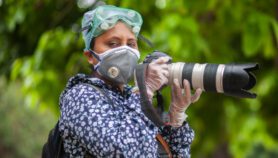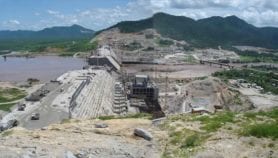By: Jan Lublinski
Send to a friend
The details you provide on this page will not be used to send unsolicited email, and will not be sold to a 3rd party. See privacy policy.
- Choosing and pitching a story
- Planning your own research
- Structuring your article
- Effective writing
- Revisions
Professional science journalism means finding an engaging story, structuring your piece and accepting editorial revisions, says Jan Lublinski.
Successful science journalism requires more than simply writing about an exciting topic. It is as much about selling a story to editors as it is actually writing. You need to plan how to proceed as early as possible — and be ready to revise this plan whenever necessary.
Choosing and pitching a story
Before committing to a topic, ask yourself how you will pitch the story you want to tell, and how it fits your target outlet. Different news outlets will be interested in different topics or aspects of a debate. Make sure that your story will interest them by looking at what they’ve already published. How do they present stories? What angle do they take? This will help you focus and limit your workload.
Make sure you know who the readers are, and be clear why they would be interested in your story. Do they read about science regularly? Knowing your audience helps you decide what to explore in depth, and which aspects are less important.
Think about how deep you need to dig into the science and methods used. Often it’s the implications that are important, though sometimes the science itself is extremely relevant. For example, a story on potential AIDS vaccines could explain why these are difficult to test, and discuss when they might become widely available. On the other hand, a new regional solar-panel project does not need you to report details about the materials used. Rather, you should focus on what the technology means to the local economy and peoples’ daily lives.
Every story needs to have an ‘angle’ or perspective. There are always many ways to tell a story. For example, you could highlight a trend or scientific controversy, or put research into context. Summarising the story in a single sentence can often clarify your perspective and help you decide which angle to take.
You should also consider what type of article to write. If you simply need to present news, or put it in context, a short news story is often the best format. If there is a longer story to be told that requires more information and background, a feature may be better. Or if yours is a subjective opinion, present it as a commentary piece. Find and read a published story in your chosen format. This will help consolidate your ideas and make your outline fit the news outlet’s style.
Whether the story will be published in print or online may also affect your writing. The golden rule of thumb is that you need only half the words for online text, but more structure.
Finally, find out who the editor is. They are more likely to be enthusiastic if you know what their interests are and what they have previously published.
Once you have a clear story, ‘pitch’ it to the editor. Explaining on the phone why it is relevant and topical, and how you plan to approach it, can be more effective than emailing. Offer a short outline, be open to suggestions, and make sure you agree how to proceed. Stay in touch in case the story, or your angle, changes.
Planning your own research
If you are writing a long news story or feature article, make sure you do your research and spend time structuring and planning the article. Write down who you need to talk to and an order for meeting or calling them. Try to get all sides of the story by talking to experts from different institutions or research groups.
Often, talking to scientists alone will not give you the full picture. For example, if you are writing about the $100 laptop (an initiative to develop cheap and flexible computers for poor children) you might talk to computer experts as well as lawyers, teachers, and people from nongovernmental organisations.
Structuring your article
Gather your raw material, then list the essential facts in a coherent order. This rough outline will help create a first draft, even if you change your structure later.
The beginning must entice the reader into reading on. It is usually best to get straight to the point, telling readers what the news is quickly. But think, early on in the process, about how an article might end, especially if you are writing a longer news story or feature article. You might sum up in a single sentence, or point to future developments. Try to surprise or entertain the readers before you let them go.
Effective writing
A well-written story is not simply a list of facts — it should follow a clear thread, making it obvious to the reader why one paragraph follows the next. Good science writing relates seemingly abstract facts and figures to the reader’s daily life and imagination. You can bring a story to life by describing and quoting people.
If you’ve used a real life situation to illustrate your story, make sure it runs through the whole article. It should lead directly to what you wanted to report, helping to hold the reader’s interest.
Well-chosen analogies and metaphors can also help. But make sure you use images and analogies that your audience can relate to. For example, comparing the acceleration of an astronaut to the strength of the Earth’s gravitational field may simply confuse your reader. And calling the human genetic code ‘the book of life’ may only make sense to those who already understand the issue.
Dealing with numbers is especially tricky. They often need simplifying, for example, 51.3 per cent is ‘about half’. In most cases you can judge when a number needs to be quoted with complete precision and when it can be rounded.
Be sceptical of statistics — make sure you understand what they actually mean, and how certain they are.
Revisions
Do not send your article to the editor straight away! If possible, leave it for a day or two. You can usually considerably improve your style and content if you re-read work later, double-checking your facts, especially spellings of names and scientific terms.
Be prepared to revise your story after the editor has seen it. Editors have their own take on a story and some may want to actively shape your piece, perhaps requesting additional work.
Delivering a science story is a dynamic and creative process. However long you have been in the business, the editorial process is still a challenging one. But the more experienced you are, the better your instinct for anticipating editors’ questions becomes. Remember, these let you address the readers’ probable questions before publication. Do not be discouraged — revisions are standard editorial practice.
Jan Lublinski is a science journalist
This article was previously part of SciDev.Net’s e-guide to science communication and has been reformatted to become this practical guide.













